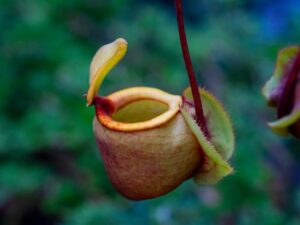Do Trees Talk to Each Other Underground?
At first glance, a forest looks still.
The trees don’t move. They don’t speak. They stand quietly as sunlight filters through their leaves.
But deep underground, something extraordinary is happening — something scientists are just beginning to understand.
So… do trees talk to each other?
Not with voices. Not with words.
But with fungus.
Let’s take a quiet step into the forest’s hidden communication system — a living web that reveals just how smart and connected nature really is.
Meet the Wood Wide Web
This is not the internet you’re used to — no Wi-Fi, no screens.
But the idea is surprisingly similar.
Hidden beneath your feet is a vast network of microscopic fungal threads, called mycelium. These threads grow underground and wrap around tree roots, forming a massive mycorrhizal fungi network that connects tree to tree — and even plant to plant.
Scientists call it the “Wood Wide Web.”
And it’s one of the most amazing examples of plant intelligence on the planet.
This fungus and tree relationship is mutual:
- 🌿 Trees give fungi sugar made during photosynthesis
- 🍄 Fungi bring trees water and minerals from far beyond the tree’s own roots
- 🧠 And through this connection… messages flow
What Do Trees Actually “Say”?
Through this forest communication system, trees can share far more than anyone expected.
Here’s what researchers have discovered:
- 🌳 Sick trees can receive help from healthy neighbors, who share carbon and nutrients
- 🌱 Parent trees support their young, sending resources to saplings growing in the shade
- 🐛 Attacked trees send warnings through the network — and nearby trees boost their defenses before pests arrive
Some trees even seem to recognize their relatives, sending more help to family than to strangers.
It’s not speech. It’s not thought in a human sense.
But it is communication.
And it changes how we understand how trees communicate and how they help each other.
Why Fungus Is the Key
This entire system depends on the presence of mycorrhizal fungi.
These fungi:
- Connect entire forests, not just individual trees
- Speed up resource sharing
- Allow for chemical signaling
- Help trees cooperate across species and generations
Without fungi, this mycelium network falls apart.
Forests become more isolated, less supportive — and more vulnerable to stress.
So when we ask do trees talk to each other, the better question might be:
“What does the fungus know?”
Because fungi aren’t just helpers — they’re messengers, movers, and matchmakers of the forest.
Why It Changes Everything
We used to picture forests as places where trees silently compete — for light, for water, for space.
But now, thanks to discoveries in plant intelligence and tree communication, we know that something much more meaningful is happening.
Forests aren’t just collections of trees.
They’re networks.
They’re communities.
And in some ways — they’re families.
Here’s what that really means:
-
A tall pine tree doesn’t just take up sunlight — it feeds its shaded neighbors through underground networks.
-
A mother tree near the center of a grove might recognize its own saplings and send them extra carbon, helping them survive.
-
When insects attack a tree, it warns others, even across species — sending chemical messages through the Wood Wide Web.
This isn’t magic.
It’s not emotions.
But it is a kind of wisdom — built into the way forests grow, respond, and adapt.
Instead of fighting for survival, trees often share what they have, listen to one another, and care for the young and the sick — all through an ancient, living mycelium network beneath our feet.
And that changes how we think about nature.
It’s not just:
-
Trees surviving on their own
-
Forests as random clusters
-
Growth as a solo act
It’s:
🌿 Connection. Communication. And quiet cooperation.
So next time you walk through a forest, pause for a second.
The trees aren’t just standing still.
They’re listening, responding, and staying connected in ways we’re just beginning to understand.
That simple truth — that the world is more connected than it looks — might just be the most powerful lesson nature has to offer.
Still Wondering?
- Do trees always cooperate — or do they compete too?
- Can plants choose who to help?
- What happens when we cut down a tree connected to the network?
- Could fungi be the real brains of the forest?
👀 Want to Explore More Curiosity-Filled Questions?
If this sparked your curiosity, there’s more on Quietly Clever for you to discover.
From why ancient Egyptians wore eyeliner, to how does a Venus flytrap know when to snap shut, to what makes rain smell before it falls, our Curious Question series digs deep into the weird, the wonderful, and the wildly clever.


